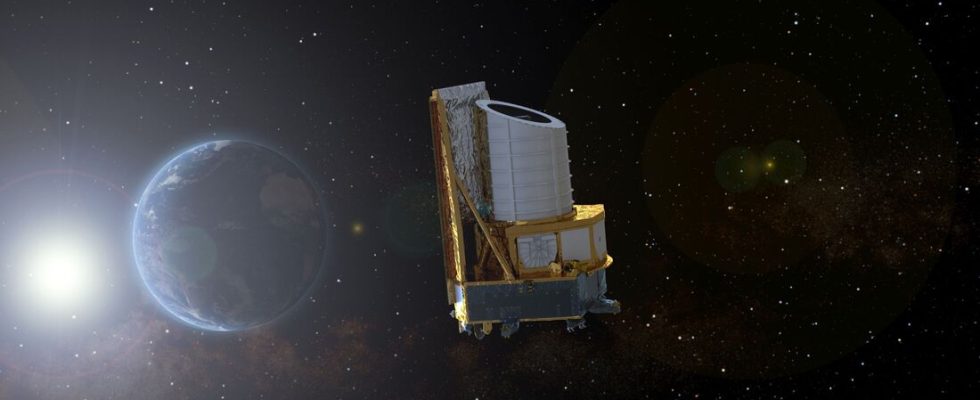The probe of the European Space Agency ESA was launched on Saturday at 5:12 p.m. CEST on top of a SpaceX Falcon 9 from Cape Canaveral, Florida. On Sunday, Euclid fired the thrusters to put it on track for the L2 Lagrange point, 1.5 billion kilometers from Earth. The probe is scheduled to arrive there at the end of July. Scientific operations will begin after tests at the end of September.
From L2, where NASA’s James Webb Telescope and ESA’s Gaia Telescope are also located, Euclid will observe billions of galaxies within a radius of ten billion light-years, capturing high-resolution images in visible and infrared wavelengths. The aim is to decipher two mysterious components of our universe: dark matter and dark energy. Dark matter cannot be detected directly, but it influences visible matter through its gravity. Dark energy is a mysterious force that appears to be causing space to expand faster.
Look into the past of space
The ESA probe is designed to create the largest and most accurate three-dimensional map of the Universe. According to ESA, this should provide information about how matter is distributed over vast distances and how the expansion of the universe has developed over the course of cosmic history. Astronomers could thus infer the properties of dark energy and dark matter. Euclid is supposed to look back ten billion years into the past.
The mission is scheduled to run for six years, with an option for a five-year extension. Euclid was built by Thales Alenia Space. Airbus was responsible for the payload module, on which the 1.2 meter diameter reflecting telescope, also developed by Airbus, and the two attached instruments VIS (camera for the visible wavelength range) and NISP (near-infrared spectrometer and photometer) are located. The NISP with detectors from NASA comes from an international consortium led by the Laboratoire d’Astrophysique de Marseille. The VIS was built by a consortium led by University College London’s Mullard Space Science Laboratory.
The European Space Operations Center (ESOC) in Darmstadt is responsible for controlling the mission and communicating with the probe. For the huge amounts of data from Euclid – up to one terabit per day – ESA’s Estrack network was upgraded with deep-sea antennas. This data will be analyzed by the Euclid Consortium, a group of over 2000 scientists from over 300 institutes in Europe, the US, Canada and Japan.
This article may contain links to providers from whom FLUG REVUE may receive a commission (so-called “affiliate links”). Further information here.

